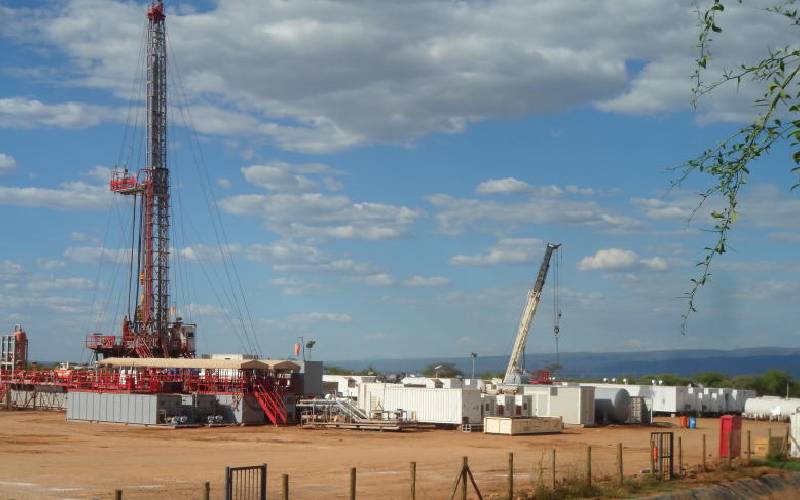 |
|
Tullow Oil announced that it had struck oil in two more wells pushing the estimates for the Turkana basin to 600 million barrels of oil. But the firm noted the overall potential for the region could well be over a billion barrels. |
By MACHARIA KAMAU
KENYA: Kenya should be optimistic but also cautious about its oil finds as well as prospect of being an oil producer. The success rate that British oil explorer Tullow Oil has had while drilling exploratory wells has driven the country into a frenzy about the prospect of being an oil producer.
Some quarters have gone on to put timelines as to when the country could export its first consignment, projecting it could be as soon as 2016.
On Wednesday Tullow announced new discoveries as well as noted that the resources within its blocks in Turkana could be holding well over a billion barrels of oil.
Analysts note that given that Tullow’s acreage is only a fraction of the areas thought to have hydrocarbons in the country and the estimates could go significantly up if other prospecting firms make more finds. The finds could also stagnate, given that Turkana is the only place where discoveries have been made.
Mwendia Nyaga, lead consultant at Oil and Energy Eastern Africa, said the country should be cautiously optimistic. He noted that despite the huge acreage allotted to prospecting firms, only Lokichar area in Turkana has had discoveries. He also noted that the country can only start commercial production after 2018, at the earliest. “The Lokichar basin where Tullow has been exploring for oil is less than 5 per cent of the prospecting acreage in Kenya, but we do not have discoveries in any other area,” said Nyaga.
“If there turns out to be oil in other blocks, what we have in Lokichar could be just a tip of the iceberg but there are no guarantees that these will be successful. We must be cautiously optimistic unless someone tells you the actual amounts they have discovered and stop calling the finds oil resources and start calling them oil reserves, things can go either way.”
Tullow — which co-owns the Lokichar blocks with African Oil — on Wednesday said it would start working with the Government with the intention of reaching a project sanction for development, including an export pipeline, in the period 2015/2016. Nyaga noted that the commercial production could take place two years after the projection sanction if the process is fast tracked, meaning Kenya’s first consignment of oil can only be exported in 2018 and beyond.
A billion barrels
“After the projection sanction, then you could give it at least two years before the commercial production starts. It could take as many as five years, so we are talking between 2018 and 2022 when the country can produce oil,” he said. “Anything before 2018 may be in small quantities that may not have a meaningful impact in terms of revenues.” Tullow said the estimates for Turkana could be well over a billion barrels. The reserves are however not a complete of the oil resources that the country might have.
Nigeria’s oil reserves stood at 37 billion barrels as of 2011 while Angola has over 12 billion barrels of proven oil reserves and Libya, which has the largest proven oil reserves in Africa, has 48 billion barrels of proven reserves as of 2012.
 The Standard Group Plc is a
multi-media organization with investments in media platforms spanning newspaper
print operations, television, radio broadcasting, digital and online services. The
Standard Group is recognized as a leading multi-media house in Kenya with a key
influence in matters of national and international interest.
The Standard Group Plc is a
multi-media organization with investments in media platforms spanning newspaper
print operations, television, radio broadcasting, digital and online services. The
Standard Group is recognized as a leading multi-media house in Kenya with a key
influence in matters of national and international interest.
 The Standard Group Plc is a
multi-media organization with investments in media platforms spanning newspaper
print operations, television, radio broadcasting, digital and online services. The
Standard Group is recognized as a leading multi-media house in Kenya with a key
influence in matters of national and international interest.
The Standard Group Plc is a
multi-media organization with investments in media platforms spanning newspaper
print operations, television, radio broadcasting, digital and online services. The
Standard Group is recognized as a leading multi-media house in Kenya with a key
influence in matters of national and international interest.










